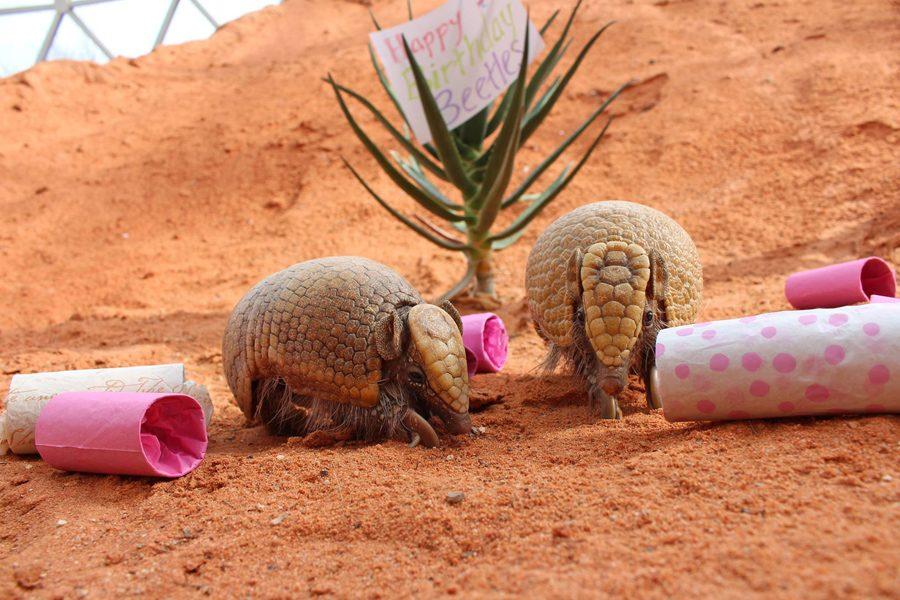Animals can still thrive in captivity
Photo from the Henry Doorly Zoo’s Facebook page
Beetles the Armadillo enjoys additional enrichment on her birthday.
March 26, 2017
With the rise of social media has come a wave of people passionately slamming out their anti-captivity beliefs into the Internet. However, despite what these individuals and groups like People for the Ethical Treatment of Animals (PETA) believe, captivity isn’t terrible.
One mantra those against captivity cry out is that animals belong in the wild. However, due to human impact, that is no longer an acceptable option for many animals.
To begin, the places where many species once roamed are no longer hospitable for them. The homelands of many species have been severely reduced and damaged by humans. Grasslands transformed into residential areas, and rainforests are mercilessly stripped down for their resources.
Another danger humans pose is how they kill wildlife needlessly and recklessly. Poachers murder a variety of endangered animals for their hides, tusks, and other body parts. According to the Wildlife Conservation Society, about 96 elephants die each day due to poaching activity.
Elephants are far from the only ones at risk. For example, the wild-born tiger Mai at our own Henry Doorly Zoo lost her leg due to a snare. Luckily, she survived and was taken into captivity, ensuring her safety.
Although many insist that animals suffer in zoos, that is often not the case. All 232 zoos currently accredited by the American Zoo Association (AZA) must meet a series of regulations in addition to federal and state laws. These regulations ensure that each animal has enough space, proper food, and the best care possible.
It’s not just their bodies that are taken care of; it’s also their minds. Enrichment is a term used to refer to an item that prevents boredom in an animal and encourages natural behaviors. For example, the Henry Doorly Zoo will spray hints of perfume in a cat exhibit to give them a new scent to investigate. Various nontoxic papier-mache creations are filled with treats and given to many different species to “hunt” and play with.
In many cases, zoos also have a focus on conservation. Millions of dollars go to improve the wellbeings of many species of plants and animals. Within the past year, Omaha Henry Doorly Zoo worked with Honduras Amphibian Rescue and Conservation Center (HARCC) released hundreds endangered frogs into Honduras after meticulously building up their population in a quarantined bio-secure facility.
Another major accomplishment of the Henry Doorly Zoo is its reforestation work in Madagascar to restore lost habitat space for endangered lemurs. The team, which provides more than 2,000 local people with jobs, has planted over one million trees. The research performed there has also given insight in the growth of native trees and has clarified lemur subspecies into their own species.
A more indirect way that zoos help animals is simply by letting the public view them alive and healthy in a safe environment. By being able to see a creature in person, interest in those animals is sparked within the visitors. Children are inspired to work for conservation to help species in the wild.
Instead of crying out where animals should belong, it’s important to see the benefits that captivity has for animals, especially in AZA accredited zoos.






